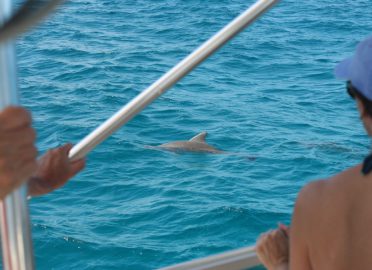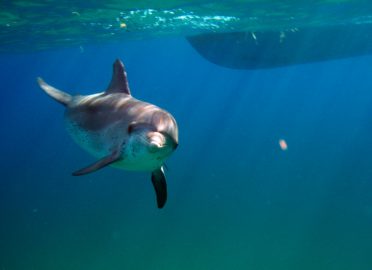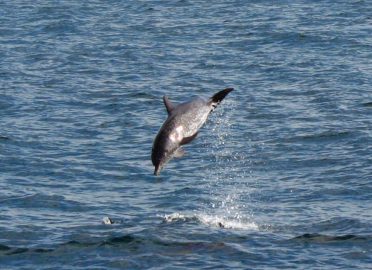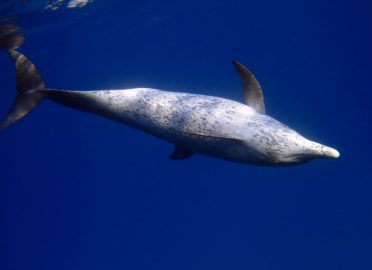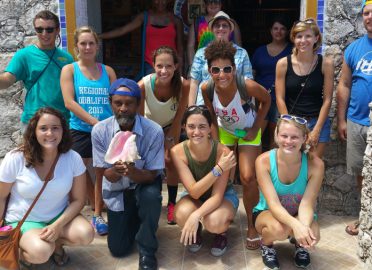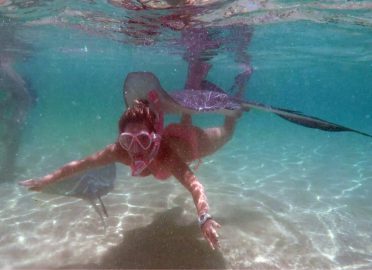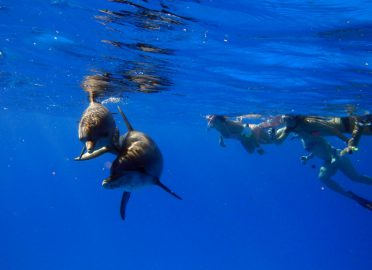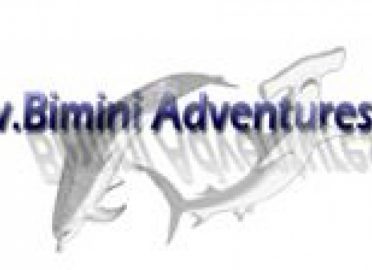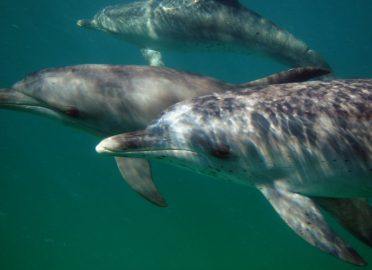Lauren is back! But the dolphins…
Tuesday was an exciting but sad day as Lauren arrived to Bimini and it was Nicole’s last day. Lauren, if you recall, was a summer intern last year. We’re thrilled to have her back, albeit for a short time, to help prepare for and orient the new interns when they arrive next week. Nicole went out on the boat solo on her final trip, and the group saw a couple of spotted dolphins that DCP did not recognize.
Spotted the Spotteds!
After a somewhat anticlimactic final day for Nicole yesterday, we got some good action on Wednesday! It was Lauren’s first day back on the water and she accompanied Kel on the boat for another dolphin trip with Bimini Adventures. After a snorkel stop at Bimini Road (where the group encountered a small nurse shark among lots of other cool critters), things were looking to be the same as yesterday.
Many Familiar Dolphins
Monday morning began with thunder and heavy rain so we stayed inside to continue organizing DCP data and equipment in the office. The summer interns will be arriving in a few days and we want to be sure everything is ready for them!
Our boat departure was the standard 1500 and this time Nicole represented DCP on her own.
Out with a splash!
On Friday, we completed our beach clean-up. We scoured the area above the high tide line. Recycling is very limited on the island and we still managed to pull out 2 bags of recyclable bottles. Even though we started soon after 900, it was so very, very hot! We rewarded ourselves with a swim to cool off. Afterwards, some of us joined Dr. M on a quick shopping trip to get canned goods to donate to the Methodist Church.
Bye EKU! Hello new tourist group!
On Saturday, we spent our final hours with the Eastern Kentucky University group. Breakfast, packing, last minute exploration, lunch and their last field report made the morning pass quickly for all. Of course, in between breakfast and lunch, we (Nicole & Kel) were in hyper drive, organizing supplies and clearing out of our wonderful space at the Sea Crest. They had a fresh tourist group right on EKU’s heels!
After 26 straight days of field courses, we took some much needed rest Saturday evening and awoke on Sunday ready to work once again.
A tour of the Dolphin House…and a swim in the dolphins’ house
On Thursday, as usual, we started the day with group breakfast. We quickly headed to the Dolphin House, for a tour with island Renaissance Man Ashley Saunders. The Dolphin House is made out of recycled items found around the island. He has been working on it for over 20 years and it has already proven strong, surviving several hurricanes and tropical storms. His family has been on Bimini, and on the same street, for nearly 200 years.
Shark Week Came Early
On Wednesday, we began with breakfast, a quick field report and sandwich making since our boat trip departed about 1100. The boat left the harbor and continued south, rather than our northern track when searching for dolphins. Today, our goal was to observe and swim with Caribbean reef sharks. They certainly look like “real” menacing sharks! On the way, we had folks from a helicopter wave to us and we felt the strength of the noon-time sun. The ride to Triangle Rocks wasn’t that long and upon arrival we immediately saw the dark shadows of the sharks.
Pigeon peas and baby D’s
Tuesday morning began with biscuits (yum!) and new Cherrios (Honey Nut). Our main class session covered mixed species groups, specifically the bottlenose and Atlantic spotted dolphins of Bimini. We discussed the possibility of hybrids and known cases of hybridization, including Dall’s & harbor porpoises. We discussed the possible functions of the mixed species groups here in Bimini, with the most support for a social function, more specifically a reproductive function.
After our soup & salad lunch, we put on (lots of!) sunscreen, filled water bottles and headed to the boat.
“The Climb” to the SharkLab
On Sunday, before Dr. Dudzinski said goodbye, she fixed Colleen’s water bottle! Then we said goodbye and headed to South Bimini. While waiting for the water taxi, the one rain cloud in the sky opened up over our heads! In this heat, we dried pretty quickly and enjoyed our water taxi ride, chatting with the ferry driver.
This ain’t Sea World – this is as real as it gets!
Monday morning started as any other day – we had no idea what was to come! But first, we took care of morning business and then had a great class with Dr. M. We discussed comparative methods when studying animal behavior. We got a quick and dirty summary of dolphin evolution and which showed us how dolphins and cows are “related.” We talked about cladograms, analogous and homologous features and divergent and convergent evolution. We covered ritualization and fixed action patterns; the same behaviors can be brought about by different stimuli.

